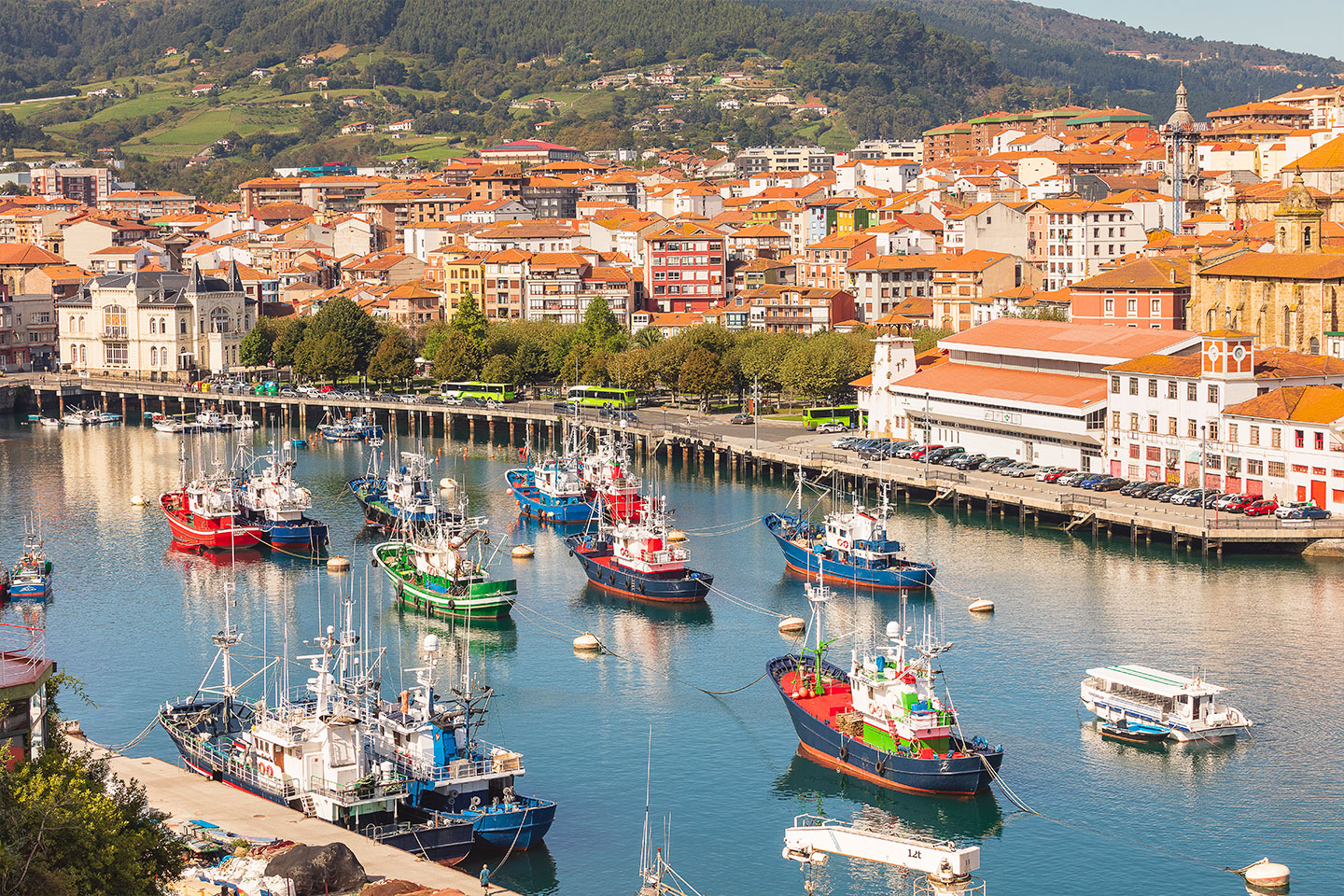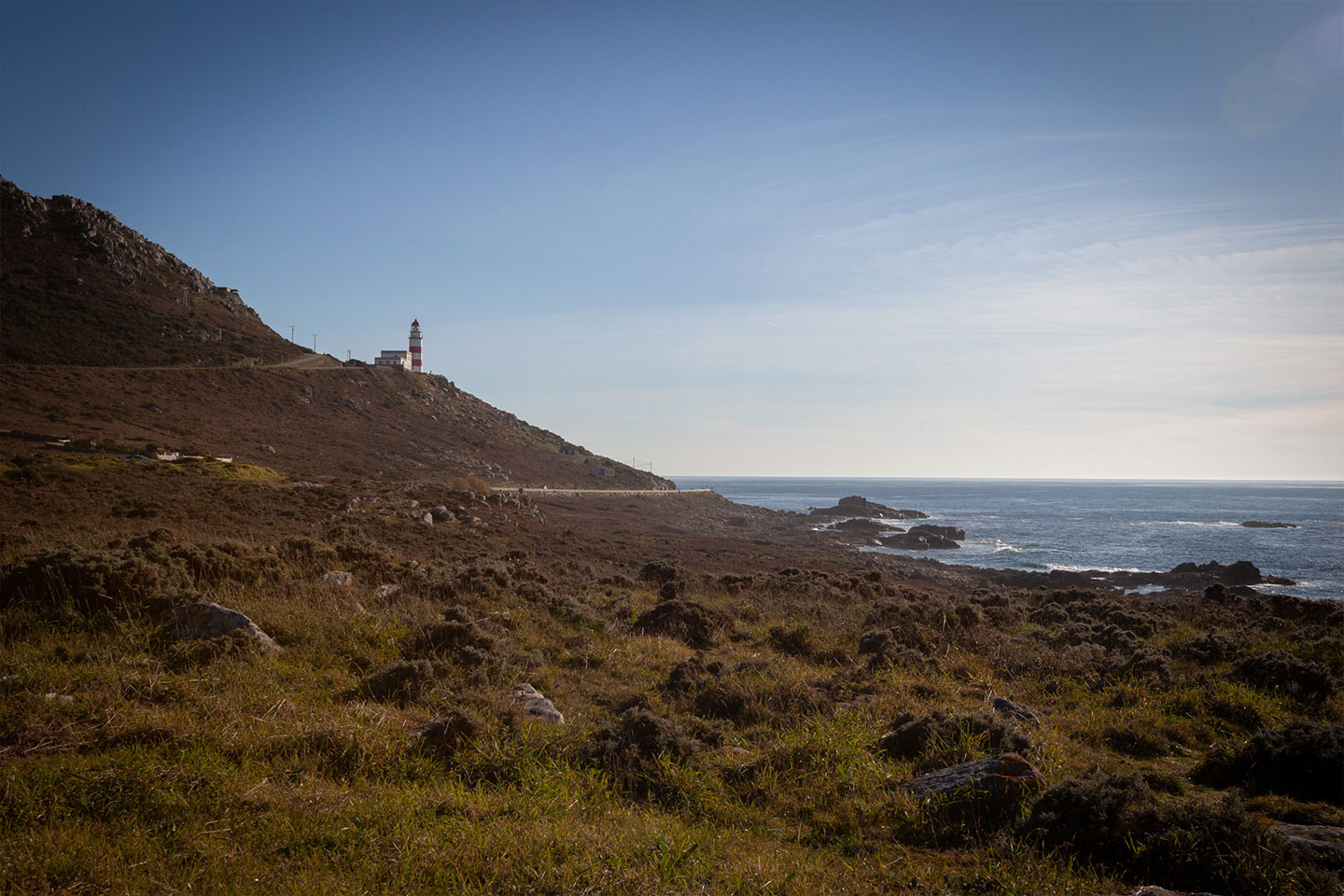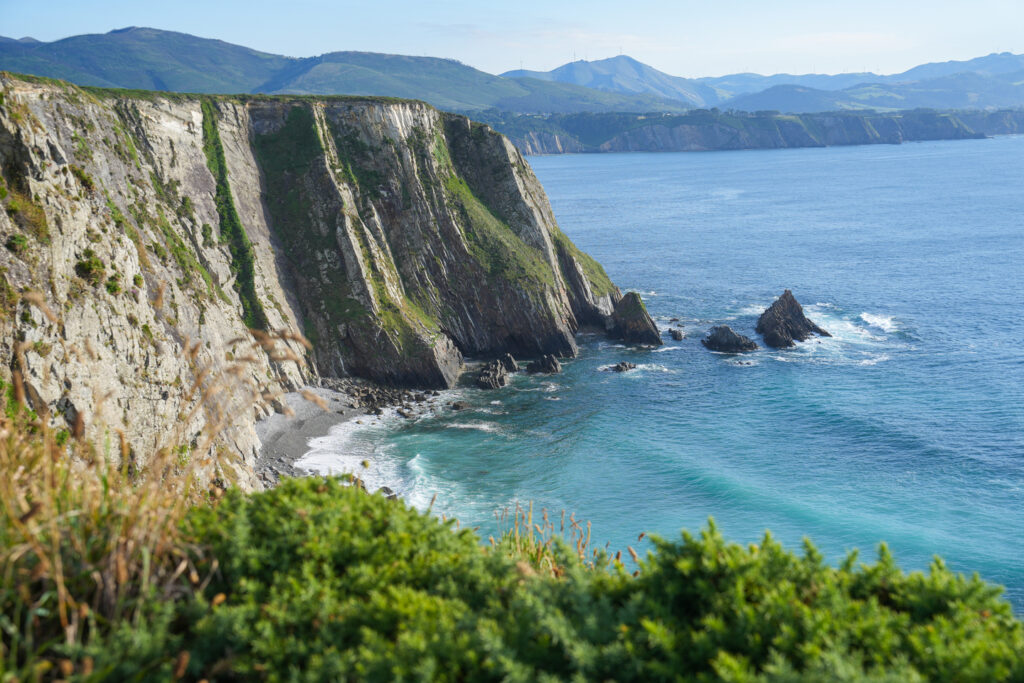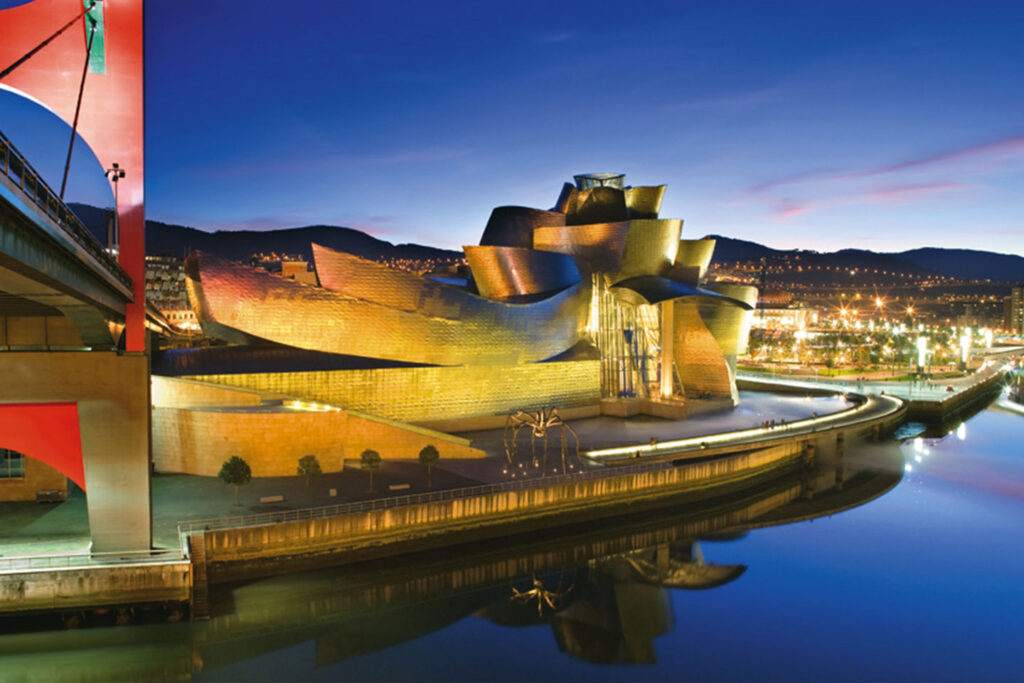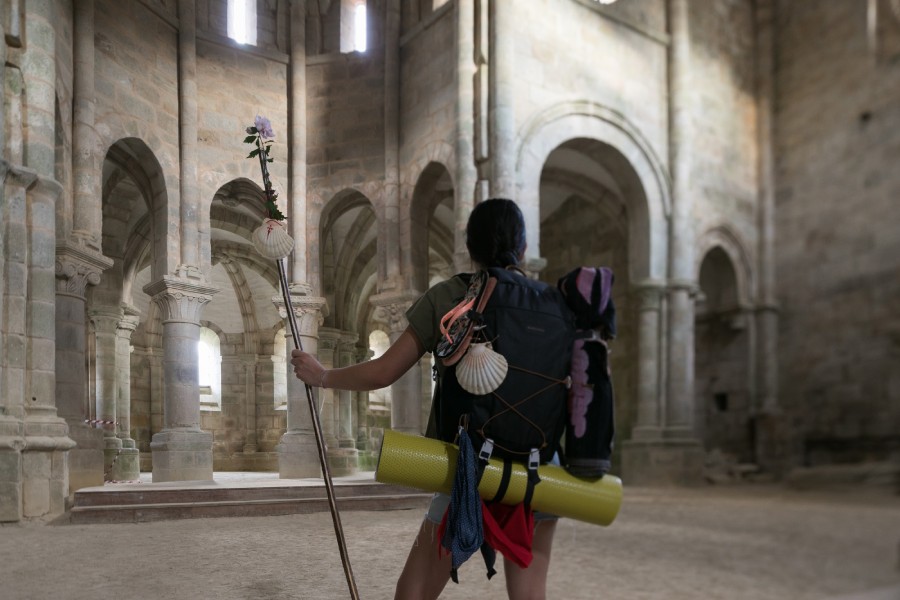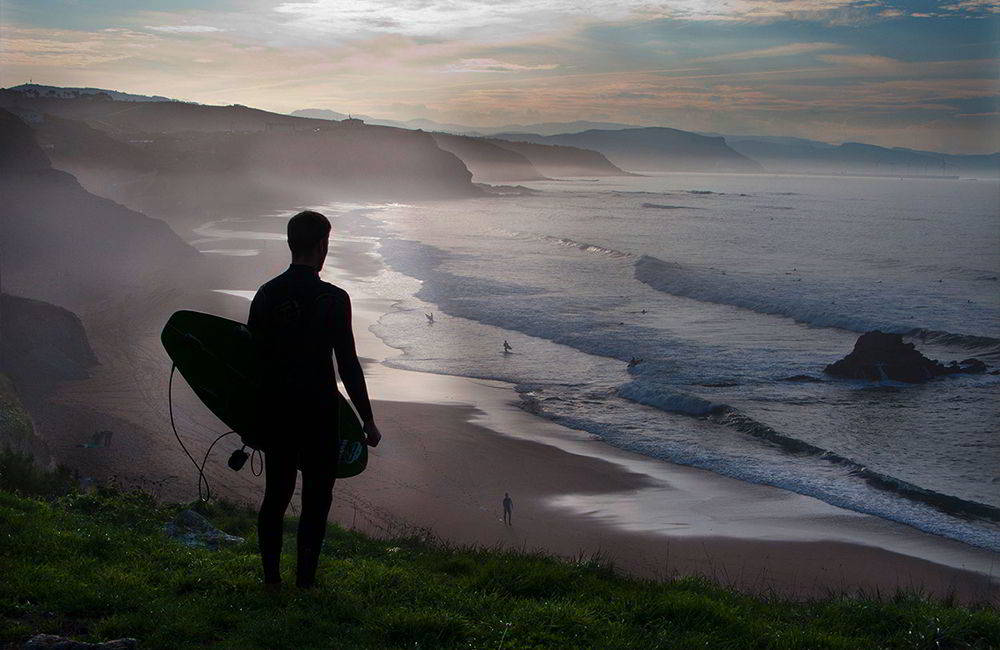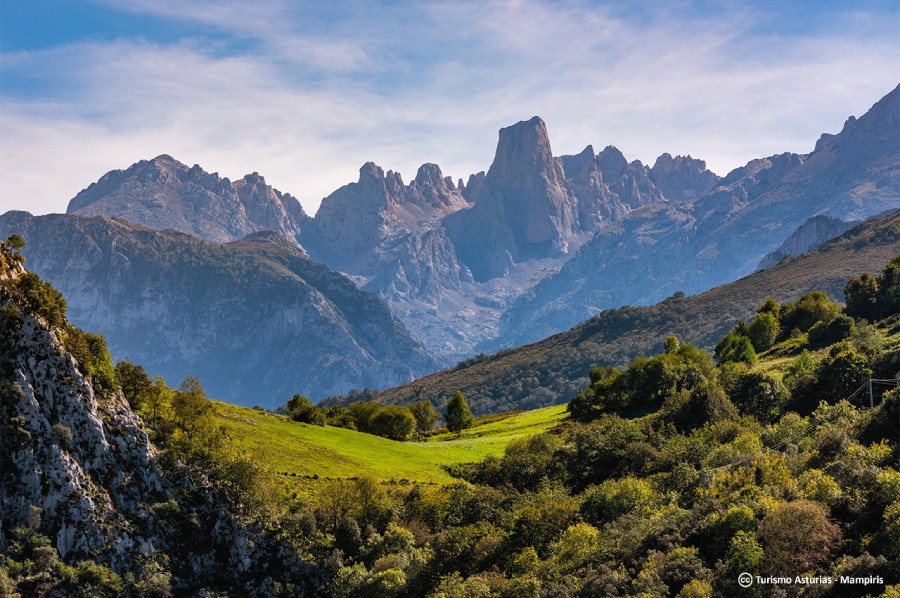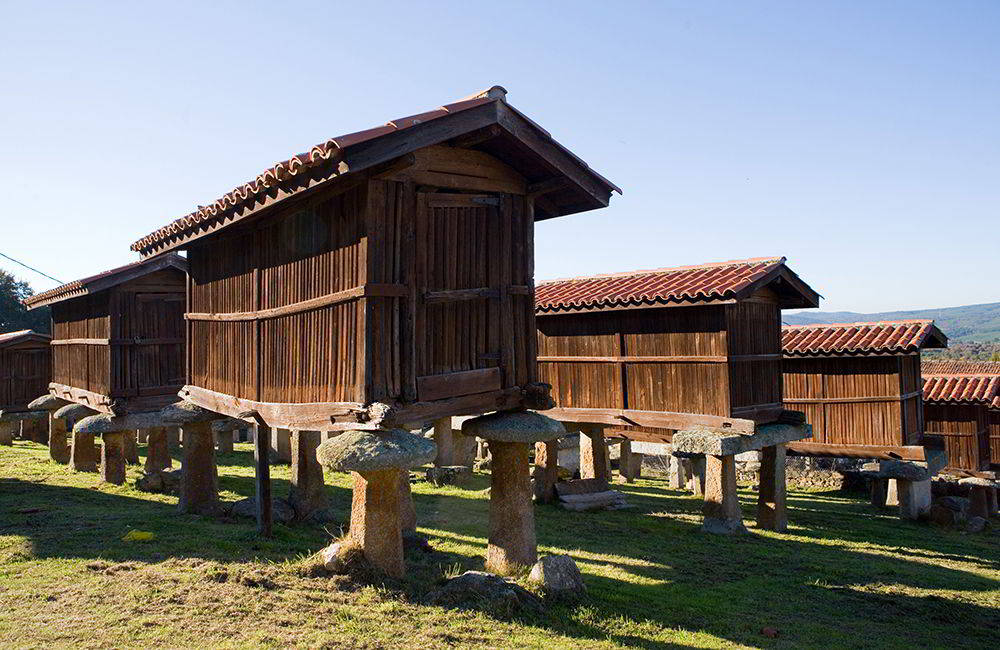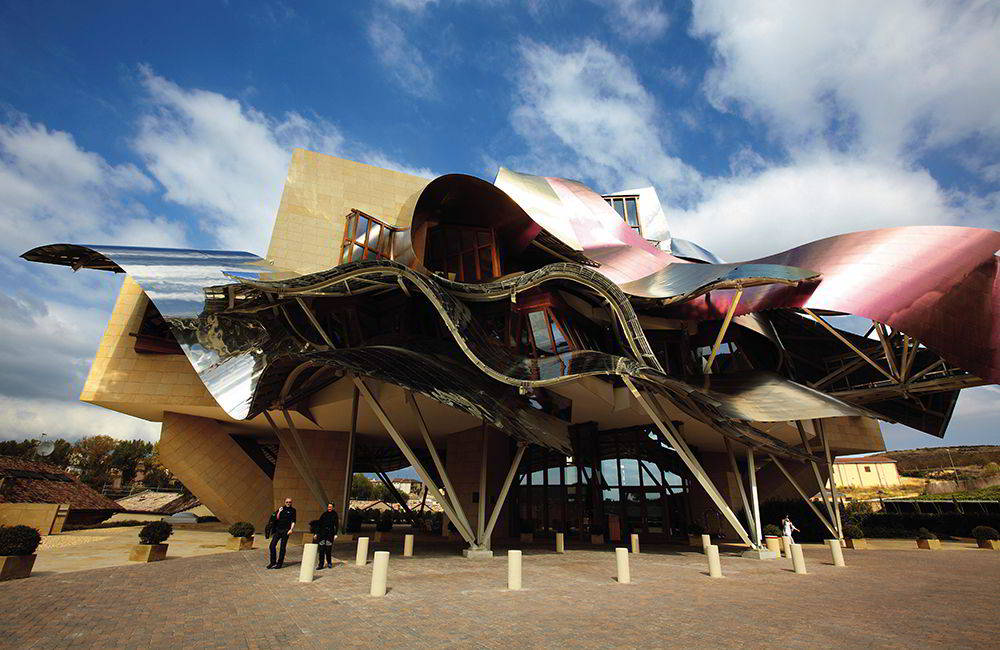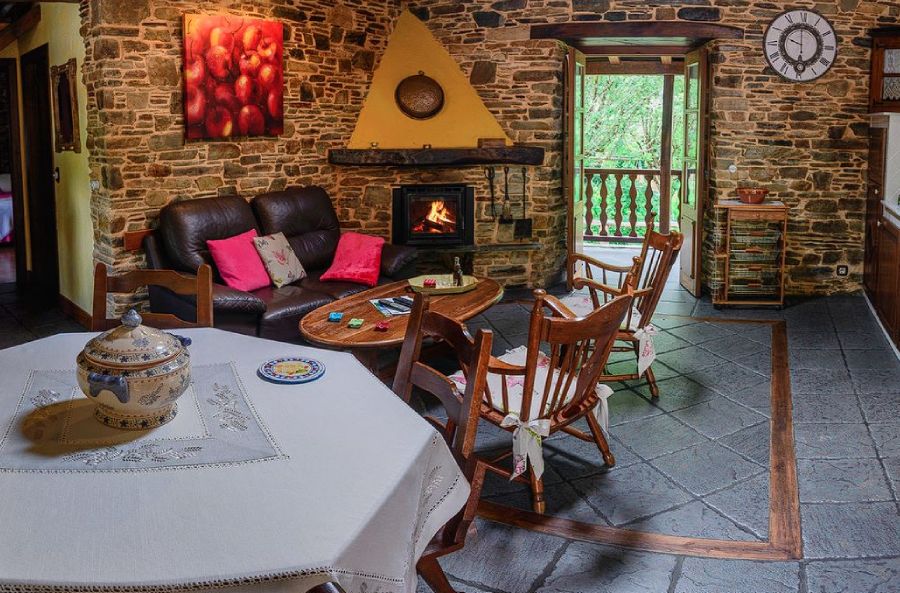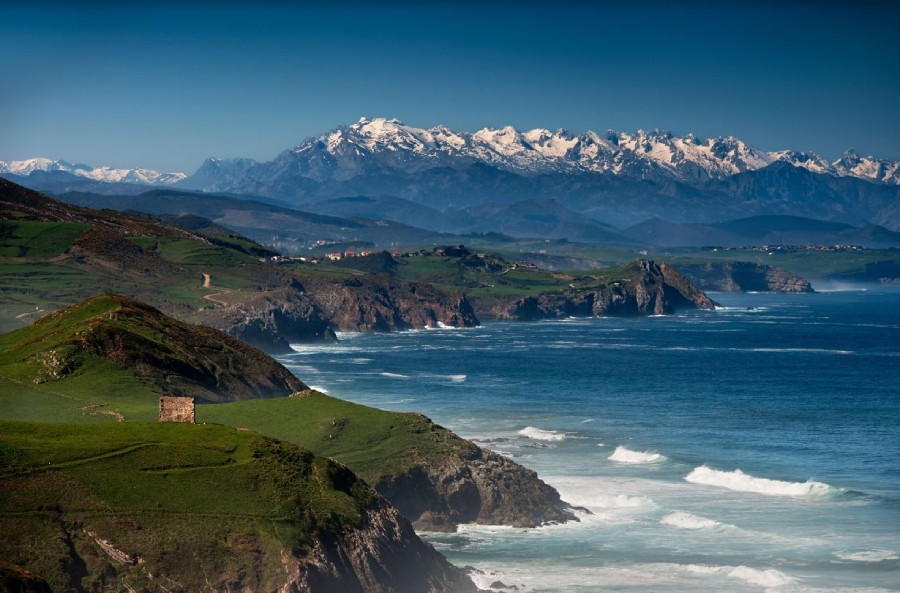Along a coast once inhabited by dragons, winding through mountains, following a mythical river or through a valley once full of architects carving into rock… We’ve prepared four short road trips through some of the most spectacular landscapes of Green Spain. For lovers of slow travel, winding roads, small mountain passes and the best ‘slow life’. Drive calmly, roll down the windows, let the Cantabrian (or Atlantic) air in, and get ready to enjoy.
BASQUE COUNTRY. From Bermeo to Getxo along the coast. Roads BI-3101, BI-3151, BI-3114 and BI-634
What will I find on this road trip through the Basque Country?
If you’re driving from Donostia-San Sebastián along the coastal roads, this is where you’ll find the dazzling grand finale of the journey before arriving in Bilbao. What does that mean? Here you’ll discover the magic that shines along the entire coast of Green Spain and a handful of unique surprises.
How many kilometers is the route?
The total route is around 40 kilometers, although it can be extended with the (numerous) scenic detours that will tempt you every few kilometers. In this short distance you’ll enjoy entertainment (gastronomic, cultural, natural…) for a whole day.
What can’t I miss?
- Bakio. Ideal for surfers and water sports lovers, for those seeking a wild beach among mountains, or those wanting to discover the secrets of txakoli.
- Bermeo. A fishing and canning town where you’ll see just how true Euskadi’s gastronomic fame really is.
- Cape Matxitxako. The northernmost point of the Basque coast and the place that often registers the strongest wind gusts when the Cantabrian Sea gets wild. And yes, it has not one but two beautiful lighthouses.
- Plentzia. A peaceful coastal town nestled around an estuary and with a wide beach, perfect for families.
- Getxo. You’ll need at least a full day to enjoy and discover the charm of the Old Port or the grandeur of the Bizkaia Bridge, the oldest transporter bridge in the world still in operation.
What’s the best-kept secret?
At the foot of the cliffs between Armintza and Barrika lies a nearly unknown spot: Muriola cove. It’s small, hard to access and far from the crowds, but with crystal-clear waters and views that look like the Caribbean… all without leaving the Basque Country.

CANTABRIA. From San Andrés de Valdelomar to Villaescusa de Ebro. Roads CA-273, CA-272, CA-274 and CA-275
What will I find on this road trip through Valderredible?
A youthful Ebro River, just fifty kilometers from its source. To this attraction you can add a heritage gem: the highest concentration of cave churches and hermitages in the Iberian Peninsula. These are truly unique religious buildings that fascinate both children and adults: caves carved into the rock that transport us centuries into the past to see how our ancestors lived their spirituality.
How many kilometers is the route?
The main route through the four roads (which connect seamlessly with each other) covers about 45 kilometers, although detours and short trips to viewpoints, caves, villages, waterfalls and nature trails are constant. Along this distance, you’ll find enough cultural, natural and gastronomic stops to fill a whole day… or maybe more.
What can’t I miss?
- Interpretation Center of Cave Architecture. The ideal place to plan the route through the valley and get introduced to the world of rock-carved churches and hermitages through panels, models and audiovisuals. It is located inside the church (cave-style, of course) of Santa María de Valverde, a true emblem that even has its own tombs… also carved in rock. A must-visit.
- Santa María de Cadalso Church, the smallest in the valley and one of the most special. Viewed from outside, it looks like a miniature fortress.
- Monte Hijedo, a deep and shady forest that harbors one of the largest oak and beech groves in Cantabria.
- San Martín de Elines, with its imposing Romanesque collegiate church, a monumental gem built stone by stone, in contrast to the dominant cave architecture.
- Cave church of Arroyuelos. Hidden in one of the valley’s folds, it is the most spectacular of all these medieval caves, similar to the constructions of Cappadocia in Turkey.
What’s the best-kept secret?
The Tobazo waterfall is located in Villaescusa de Ebro and is easy to find. Just follow the sound of the water (or the signs) for a few minutes to this curiosity that looks as if it were designed by Antoni Gaudí himself. The walk to it is an experience in itself, suitable for all kinds of walkers. If you continue the climb, you’ll reach the cave hermitage of Villaescusa de Ebro, which will surprise you with its primitiveness and simplicity.
ASTURIAS. From Trubia to Puerto de San Lorenzo. Roads AS-228, AS-265 and AS-227
What will I find on this road trip through Asturias?
An odyssey into the heart of Asturias from the industrial towns near Oviedo, in the company of the Trubia River and perhaps under the watchful (and hidden) gaze of the brown bear. What else is on this typically Asturian menu? Prehistoric connections, medieval art, railway tunnels carved into rock and even a mummy or two.
How many kilometers is the route?
The route from Trubia to Puerto de San Lorenzo covers approximately 50 kilometers, winding through a narrow, shadowy valley full of contrasts along roads AS-228, AS-265 and AS-227.
What can’t I miss?
- La Senda del Oso, a greenway that revives the old mining train route and crosses the Asturian landscape through gorges, tunnels, bridges and forests.
- La Casa del Oso in Proaza. It was the home of the bears Paca and Tola and has become a symbol of the fight to preserve this species. It’s the perfect place to learn everything about bears in Asturias.
- Peñas Juntas Gorge. The name says a lot but doesn’t quite spoil the awe this spot inspires when driving through it. It’s well worth stopping to enjoy this natural site that human engineering barely managed to tame.
- The church of Santo Adriano in Tuñón, a pre-Romanesque gem with unique Mozarabic paintings in Asturias and a tombstone embedded in the south wall commemorating the consecration of the year 1108.
- The Collegiate Church of San Pedro in La Plaza (Teverga). Its origins go back to the Middle Ages (it still preserves Romanesque and pre-Romanesque remains) and houses the mummified bodies, from the 16th and 17th centuries, of the Marquis of Valdecarzaba and his son.
- The Prehistoric Park of Teverga, where the artworks of Europe’s most emblematic cave paintings come to life.
What’s the best-kept secret?
It’s such a well-kept secret that it hides underground. The Cueva Huerta, located in the municipality of Teverga, is one of the largest caves in Asturias and a prominent karst system in the northern Iberian Peninsula. Declared a Natural Monument, it boasts over 14 km of galleries and features spectacular formations as well as protected bat colonies. It can be visited only with a guide, and there are routes suitable for most people with no caving experience.
GALICIA. From Tui to A Guarda. Road PO-552.
What will I find on this road trip through the south of the Rías Baixas?
A cinematic travelling shot following the Miño River in its final kilometers before merging with the Atlantic Ocean. What will we see through the car windows? Portugal, the neighboring country, across the river; a fantastic estuary where cows graze on its islands next to one of the richest birdwatching areas in the peninsula (a must for bird tourism lovers); and several charming villages with that unique borderland feel found nowhere else in Green Spain. Welcome to a Galicia far from the main tourist routes.
How many kilometers is the route?
This route is just over 35 kilometers long, but the complexity of the landscape will tempt you to park the car quite a few times.
What can’t I miss?
- Tui, the perfect starting point, with its imposing cathedral-fortress (Romanesque-Gothic) and a stone old town that breathes history. From here, the Miño already feels like both a border and a bridge to Portugal.
- Oia, a small fishing village where the Monastery of Santa María stands directly above the sea. Seeing the monastery with the ocean pounding its walls is simply unforgettable.
- Alto da Portela, between Baiona and Oia, is one of the great viewpoints of this trip. On clear days, the silhouette of Mount Santa Trega can be seen on the horizon.
- A Guarda. A captivating village for a slow stroll through its seaside quarter (with its Hispano-Portuguese charm) in search of the perfect tavern or restaurant. It’s worth checking whether A Guarda’s culinary reputation is as strong as they say.
- Monte Santa Trega. Home to one of the best-preserved hill forts in Galicia and, best of all, it offers the finest panoramic views to understand and appreciate the estuary and the natural border.
What’s the best-kept secret?
The Area Grande beach, in O Rosal, just a step from A Guarda. It’s a charming, protected and quiet cove that often goes unnoticed. It doesn’t have the fame of other Galician beaches, but on its white sands and in its unspoiled surroundings hides a serene Galicia, perfect for disconnecting after a road trip.
